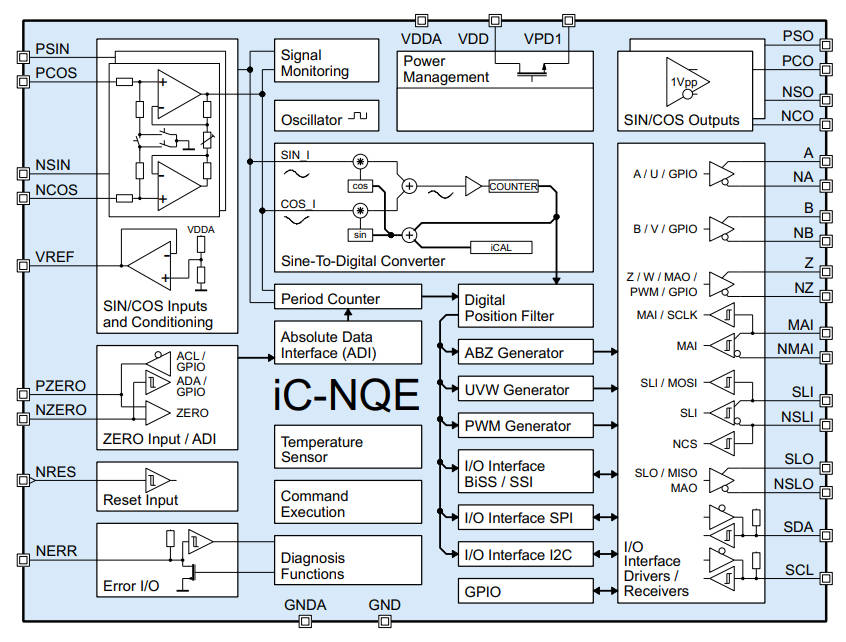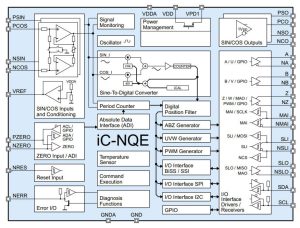
“Linear scales and angular sensors can benefit from higher resolution and accuracy, enabling an outstanding measurement precision, a faster motion speed or an improved control quality for drives,” claimed the company.
By combining analogue and digital processing, the IC, called iC-NQE, takes in analogue sine and cosine signals and outputs high-resolution incremental and absolute angle data in formats including simulated quadrature encoder, motor commutation signals, absolute position up to 16bit resolution, and 32bit cycle counting.
Host controllers can connect via SPI or I2C, and a RS-422 transceiver is included for BiSS interface cables.
Maximum resolution is 16bit per input period. Inputs can be up to 70kHz for an A/B quadrature output with 1,024 increments, or up to 500kHz if a quadrature encoder is connected to the analogue inputs and only whole cycles need to be counted (up to 32bits). Maximum conversion rate on the sine and cosine inputs is 80Msample/s.
The programmable input amplifiers can handle differential sensor signals from 30mV to 3V.
“Primary signal errors can be compensated to a residual signal error of less than 0.1% using analogue corrections,” said the company. “In addition, the non-linearity of the sensor can also corrected by digitally adjusting the transfer function in the converter if necessary – the converter circuit [is based on] vector tracking for virtually latency-free angle tracking. Optionally, a digital position filter can be enabled for noise and interference suppression.”
For motor commutation, UVW signals can be generated for motors with up to 32 pole pairs.
Power is required at 3.3 or 5V, and the chip comes in a 5 x 5mm 32pin QFN, and something similar in a 20pin TSSOP is planned.
See the interface IC at Embedded World in Nuremberg over 11-13 March on stand 370 in hall 4.
Until this message is removed, take the figures above with a pinch of salt as they come from mixed sources and await final fact checking as there is no public data sheet to work with.
Find the sine to digital converter product page here







